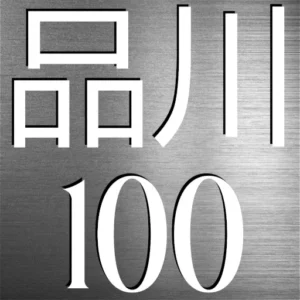Once known for its abundant catch of fish and major producer of seaweed, Shinagawa-ura is now the mooring place for fishing boats and colourful Yakatabune (houseboats).
What are Shinagawa-ura Waters and Harbour?
Harbour, Boats and Water.
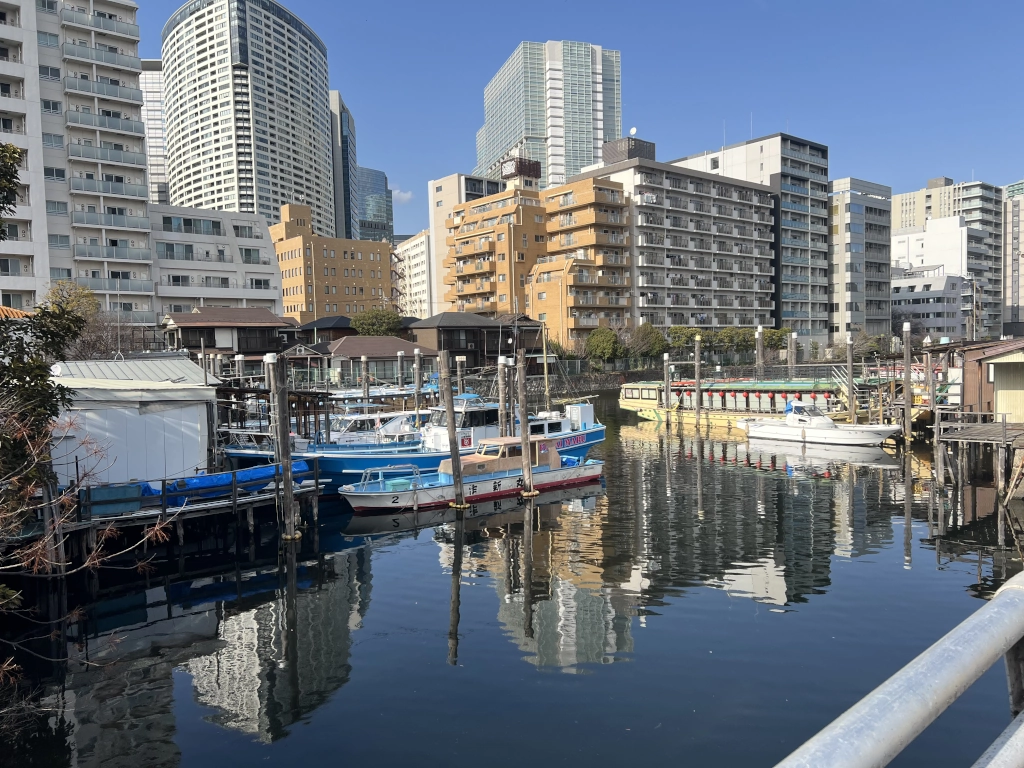
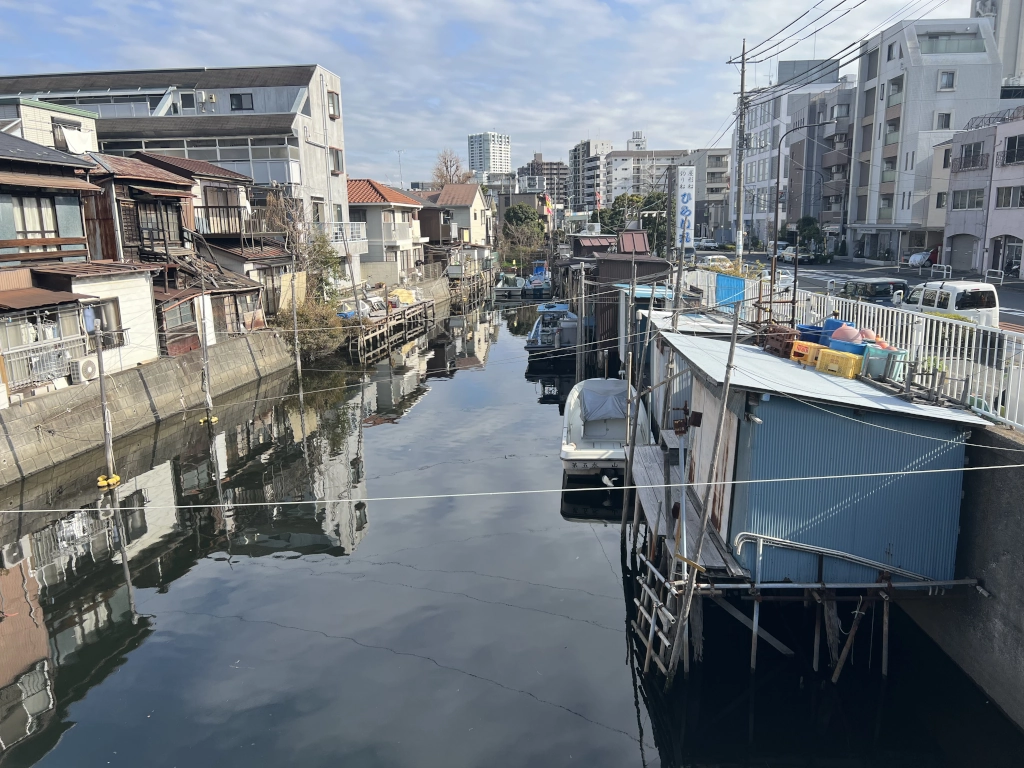
See… harbour, boats and water. And sky and a view of apartments.
Shinagawa-ura it was part of the South Shinagawa Post Station (Minami-Shinagawa-juku). It was a fishing village sticking out into Edo Bay, with its own fishing community right where the Meguro River used to meet the bay. Fishermen had a common area on this headland to dry their nets. The area is is still reminiscent of the fishing town that it was when it served as a major producer of dried seaweed during the Edo era.
History of Shinagawa-ura
Shinagawa’s “Susaki” used to be a sandbank created an accumulation of silt at the mouth of the Meguro River. Originally, an uninhabited land called “Kabutojima”. Monk Takuan of Tokai-ji Temple established “Susaki Benten-do” (a hall) at the tip of the sandbank in 1626.
In 1655, the first year of the Meireki era, residents of ‘Minami-Shinagawa-juku’ who refused the post-horse duty were forcibly relocated here. This led to the birth of the fishing town ‘Minami-Shinagawa Ryōshi Machi’. Later known as Shinagawa-Ura it became one of the “Eight Sea Lagoons1” that presented fresh fish to Edo Castle.
In the mid-Edo period the Kagata (利田) family, the leaders of Minami-shinagawa-juku, reclaimed the land in front of Minami-shinagawa Ryōshi-machi. This gave rise to Minami-shinagawa Shinkaiba later known as Kagata Shinchi.
Depictions of Shinagawa-Ura During the Edo Period
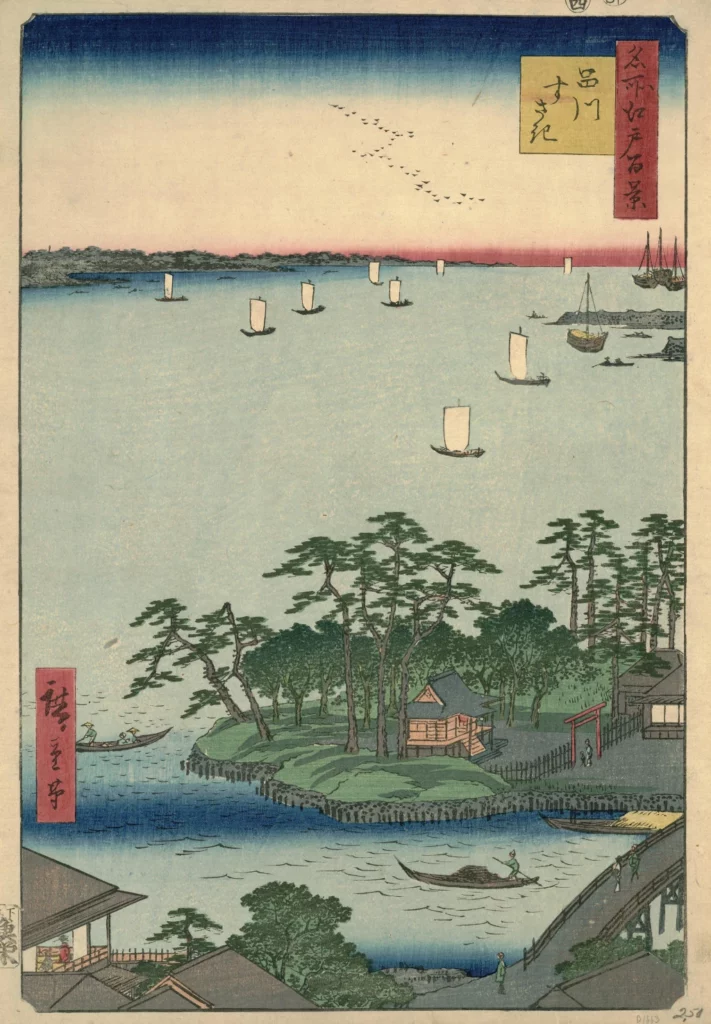
It is also depicted in woodblock prints by Edo artist Hasegawa Settan (長谷川雪旦) published in Edo Meisho Zue (江戸名所図会) “Guide to Famous Edo Sites” 1830.
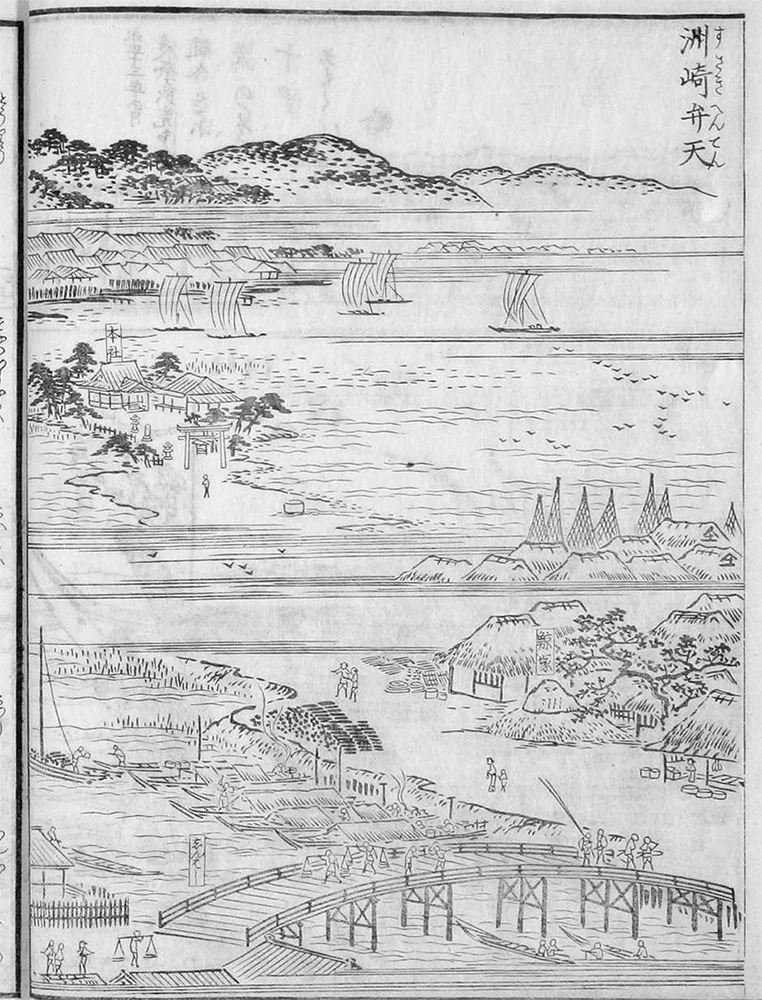
Where is it?
| what3words | ///kipper.pine.soccer |
| latitude longitude | 35.62202 139.7234723 |
| Nearest station(s) | Kitashinagawa (Keikyu line) |
| Nearest public conveniences | South near the Whale Mound and Kagata Shrine |
Show me a sign.

Nice sign. Right by the Kitashinagawa Bridge.
Withervee says…
Shinagawa-ura wasn’t just a scenic bay — it was a food source for Edo Castle. Fish, clams, and seaweed from here fed the city’s elite. The area was designated a supplier village (osaiura) under the shogunate. By the 1670s, the locals had also pioneered a technique for growing seaweed on submerged fish pens — sparking a booming nori industry.
Today you see quite a few people hanging around the area. Sitting around resting, smoking, drinking, feeding pigeons etc. A nice place for workers to hang around at lunchtime on a nice day. Before the Meguro River was diverted by a flood it used to flow down this channel. Now it enters Tokyo Bay much further south. The river has has since had it’s banks reinforced to prevent further diversions.
If you walk further south (along the road on the right in the image below) past the whale monument you come to a junction with Yamate-dori. Yamate-dori follows the former route of the Meguro River.
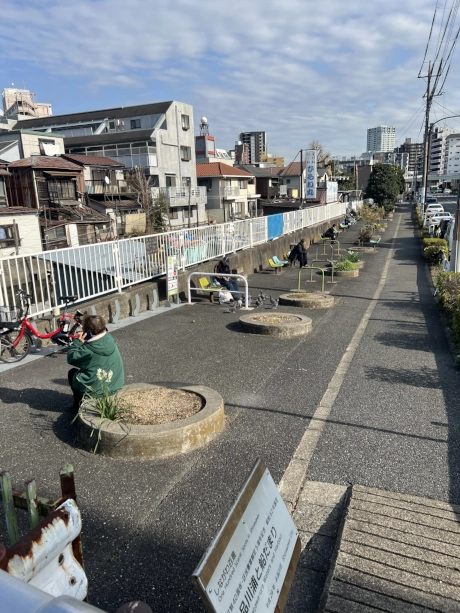
If you’ve grown tired of built-up high-rise Tokyo you can get some good skyscapes as it’s quite an open area next to the water.
At the right time of year you can see large turtles if you look into the canal from the bridge.
It seems to be a mooring for houseboats and marine tours. So it might attract some tourists.
Footnote
- The Eight Sea Lagoons 御菜肴八ヶ浦 (Osai Hakkauri) refers to eight fishing villages during the Edo period that were granted special privileges because they supplied fish to the Shogun’s kitchen1. These villages were:
芝金杉浦 (Shiba Kanesugi-ura)
本芝浦 (Honshiba-ura)
品川浦 (Shinagawa-ura)
大井御林浦 (Ooi Morihayashi-ura)
羽田浦 (Haneda-ura)
生麦浦 (Namamugi-ura)
新宿浦 (Shinjuku-ura)
神奈川浦 (Kanagawa-ura)1
(The term Shinjuku “新宿” referred to a place in Yokohama City, Kanagawa Prefecture. Not Shinjuku 新宿 in Tokyo.)
These villages had the privilege of fishing in the Edo Bay and were obliged to supply fresh fish three times a month to the Edo Castle. However, from 1792 the supply of fresh fish was stopped and changed to a monetary offering. Along with the money, they started offering fresh fish once a month, called “Ryoshohatsuho”.
These villages were proud of their abundant catch and were also the main production areas for seaweed. However, due to the construction of Tokyo Port in 1962 they transferred their fishing rights to Tokyo and seaweed farming around Shinagawa ended the following year. ↩︎
Site Character
- Lifestyle 生活 (Seikatsu): ✔️
- Historical Significance 歴史 (Rekishi): ✔️
- Atmosphere/Natural Features 風土 (Fūdo): ✔️
Who in their right mind would vote for this?
- Fishing nostalgists
- Canal walkers
- Old Tokyo fans
- Boat photographers
- Seafood romantics
Further Information
While you’re there…
Walk the boardwalk along the canal, visit the nearby Ebisu Shrine, or enjoy a yakatabune dinner cruise if you time it right. Shinagawa’s old town is just around the bend.

